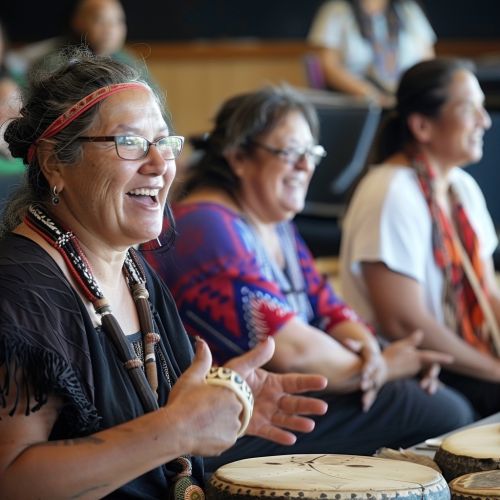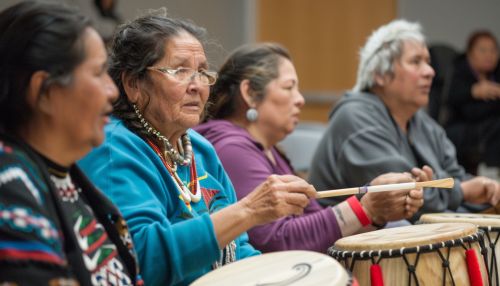Endangered languages
Overview
Endangered languages are languages that are at risk of falling out of use, typically because they have few surviving speakers. If a language loses all of its native speakers, it becomes a dead language. The process of language endangerment can be gradual or rapid, often influenced by social, economic, and political factors. This article delves into the complexities of endangered languages, examining their causes, consequences, and efforts for preservation.
Causes of Language Endangerment
Sociopolitical Factors
Sociopolitical factors play a significant role in the endangerment of languages. Political oppression, colonization, and forced assimilation policies have historically led to the suppression of minority languages. For instance, during the colonization of the Americas, indigenous languages were often suppressed in favor of European languages like Spanish, English, and Portuguese. Modern examples include the suppression of the Tibetan language in China and the marginalization of Kurdish in Turkey.
Economic Pressures
Economic pressures can also contribute to language endangerment. In many cases, speakers of minority languages may shift to more dominant languages to gain economic advantages. For example, in many African countries, people often adopt English, French, or Portuguese to access better job opportunities, leaving indigenous languages at risk.
Cultural Assimilation
Cultural assimilation is another critical factor. When minority communities assimilate into dominant cultures, their languages often lose their functional utility. This phenomenon is evident in immigrant communities where subsequent generations may abandon their ancestral languages in favor of the dominant language of their new country.
Technological Influence
The advent of technology and global media has further accelerated language endangerment. Dominant languages like English, Mandarin, and Spanish dominate the internet and global media, leading to reduced use of minority languages. Social media platforms, online content, and digital communication often favor these dominant languages, marginalizing others.
Consequences of Language Endangerment
Loss of Cultural Heritage
Languages are repositories of cultural heritage, embodying the history, traditions, and worldview of their speakers. When a language becomes endangered, the cultural knowledge encoded within it is at risk of being lost. This includes traditional stories, songs, rituals, and indigenous knowledge systems related to medicine, agriculture, and ecology.
Cognitive and Educational Impact
The loss of a language can have significant cognitive and educational impacts on its speakers. Research has shown that bilingualism and multilingualism offer cognitive advantages, including improved executive function and problem-solving skills. The loss of a native language can deprive individuals of these benefits and impact their educational outcomes.
Biodiversity and Linguistic Diversity
There is a notable correlation between biodiversity and linguistic diversity. Many endangered languages are spoken in regions with high biodiversity, such as the Amazon rainforest and Papua New Guinea. The loss of these languages can lead to a decline in the traditional ecological knowledge that is crucial for biodiversity conservation.
Efforts for Preservation
Documentation and Revitalization
One of the primary efforts to preserve endangered languages is through documentation and revitalization. Linguists and anthropologists work to record and document languages, creating dictionaries, grammars, and audio recordings. These resources are essential for language revitalization programs, which aim to teach and promote the use of endangered languages.
Community Involvement
Community involvement is crucial for the success of language preservation efforts. Language revitalization programs that actively involve community members, especially elders and native speakers, are more likely to succeed. Community-driven initiatives, such as language nests and immersion schools, have been effective in revitalizing languages like Māori in New Zealand and Hawaiian in the United States.
Policy and Legislation
Government policies and legislation can also play a vital role in preserving endangered languages. Official recognition and support for minority languages can create a favorable environment for their use and transmission. For example, the European Charter for Regional or Minority Languages aims to protect and promote regional and minority languages in Europe.
Technological Solutions
Technological solutions are increasingly being used to support language preservation. Digital tools, such as language learning apps, online dictionaries, and social media platforms, can help promote the use of endangered languages. Virtual reality and augmented reality technologies are also being explored to create immersive language learning experiences.


Case Studies
The Māori Language
The Māori language, or Te Reo Māori, is an example of successful language revitalization. Once on the brink of extinction, the language has seen a resurgence due to concerted efforts by the Māori community and the New Zealand government. Initiatives such as Kōhanga Reo (language nests), Kura Kaupapa Māori (Māori immersion schools), and media broadcasts in Māori have contributed to its revival.
The Hawaiian Language
Similar to Māori, the Hawaiian language faced severe decline but has experienced revitalization efforts. The establishment of Pūnana Leo (language nests) and Hawaiian immersion schools has played a significant role in increasing the number of Hawaiian speakers. Legislative support, including the recognition of Hawaiian as an official language of Hawaii, has further bolstered these efforts.
The Ainu Language
The Ainu language of Japan is another example of an endangered language undergoing revitalization. Historically marginalized, the Ainu people have initiated efforts to revive their language through cultural programs, language classes, and the establishment of the Ainu Language School. Government recognition and support have also been crucial in these efforts.
Challenges in Language Preservation
Lack of Resources
One of the significant challenges in language preservation is the lack of resources. Many endangered languages are spoken by small, economically disadvantaged communities that may lack the financial and human resources needed for effective documentation and revitalization.
Political and Social Barriers
Political and social barriers can also hinder language preservation efforts. In some cases, governments may not recognize or support minority languages, leading to their further marginalization. Social stigmatization and discrimination against speakers of minority languages can also discourage their use and transmission.
Technological Limitations
While technology offers potential solutions for language preservation, it also presents challenges. The digital divide means that many communities at risk of language loss may not have access to the necessary technological tools and resources. Additionally, the dominance of major languages on digital platforms can overshadow minority languages.
Future Directions
Integrating Language and Cultural Preservation
Future efforts in language preservation should integrate cultural preservation, recognizing that languages are deeply intertwined with cultural identity. Programs that promote the use of endangered languages in cultural practices, ceremonies, and daily life can help ensure their survival.
Collaborative Approaches
Collaborative approaches involving linguists, anthropologists, community members, and policymakers are essential for effective language preservation. Interdisciplinary and community-driven initiatives can address the multifaceted challenges of language endangerment more comprehensively.
Leveraging Technology
Leveraging technology for language preservation will continue to be important. Innovations in artificial intelligence, machine learning, and digital humanities can provide new tools for documenting, teaching, and promoting endangered languages. Ensuring that these technologies are accessible to all communities is crucial.
